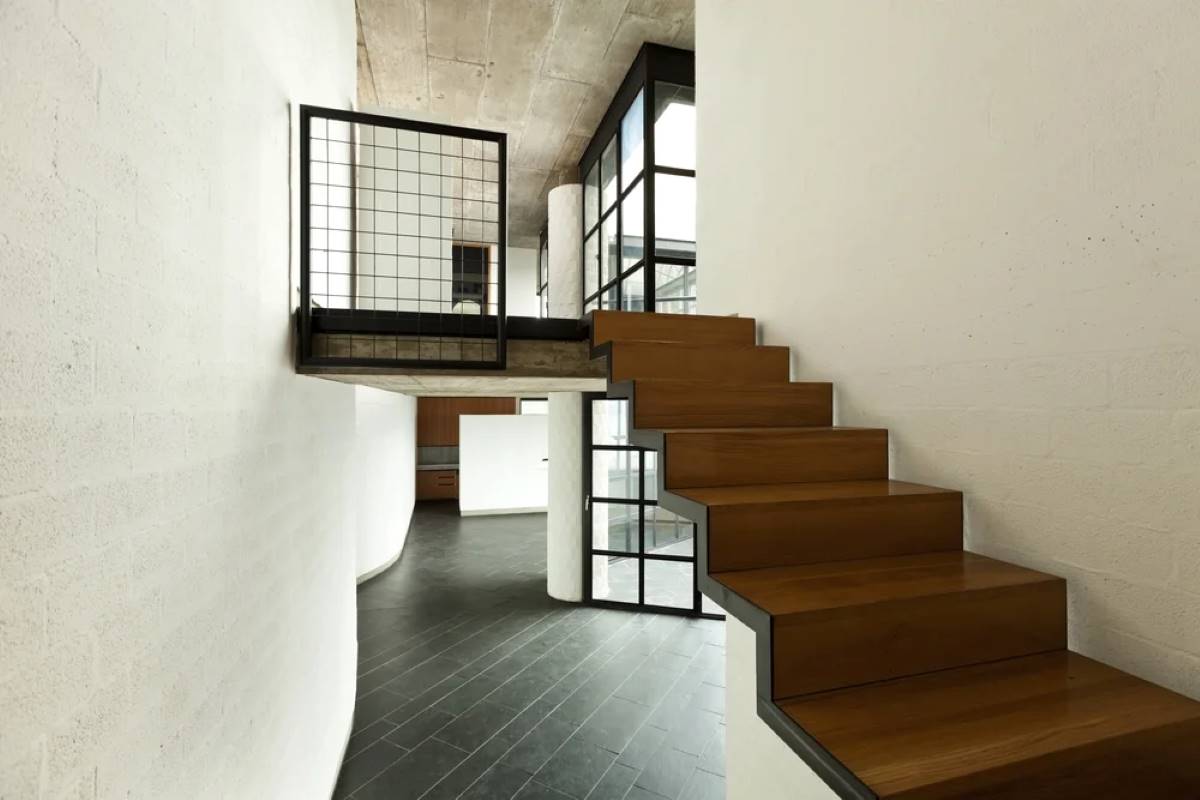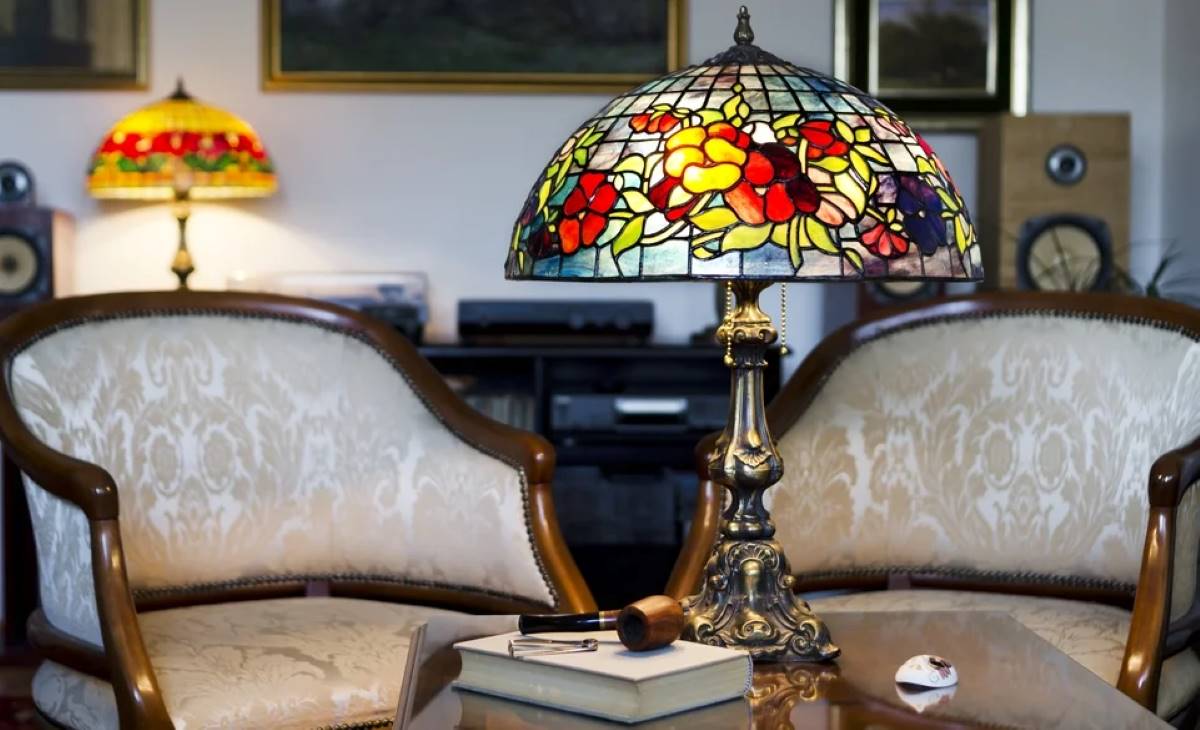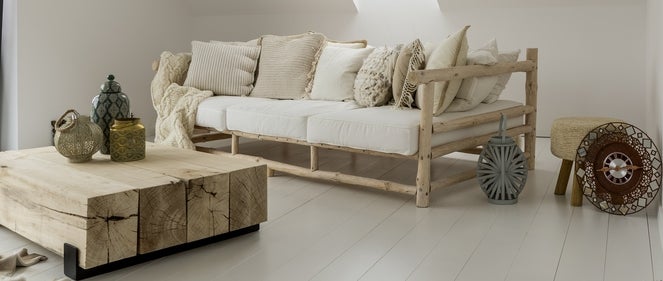At this point in the year, you’ve probably already formed your own opinions about the worst home decor trends of 2019. But some of these are so dangerous, they’re worth talking about in July.
The point of decor is to make a home more inviting and comfortable for you and your family. But these 10 trends show what happens when aesthetics prevail over function – and safety. While your homeowners insurance policy may have your back when it comes to a few odd accidents, but it doesn’t cover wear and tear, or features that aren’t up to code.
Without further ado, here are 10 decorating trends to avoid and some safer alternatives.
Open features are trending: Shelving, stairs, and floorplans

Floating staircases make a statement, but don't let aesthetics prevail over function – or safety.
Open spaces are in, but that doesn’t mean they’re always safe. If you don’t love the dark or closed-off rooms, you may enjoy eliminating shadowy corners and walls that obstruct visibility. But it’s important to know the risks that come along with these features.
1. Floating shelves and storage
The trend: “Floating” shelves, which appear to jut out dramatically from the wall, without the braces you’d see on ordinary shelves.
The risk: If these bookshelves and dressers are not properly anchored, they can pose a serious safety hazard. Perhaps the best example of this comes from Sweden: consider the infamous IKEA recall after a dresser caused the death of a young boy. The new design Ikea introduced to the market requires attachment to the wall.
Similarly, floating shelves must be properly anchored in order to hold the weight of any books or decorations. If you’re wondering whether yours are securely attached to your wall, check out this primer on how to install floating shelves.
Bottom line: If you choose “floating” fixtures, pay attention to anchoring instructions. Failing to do so could lead to injury of your family or your guests. The latter might be covered by your homeowners insurance; the former would not.
2. Open staircases
The trend: Staircases without banisters
The risk: One of the most dangerous features of a house can be a staircase, if it’s not up to code (your handrail and guardrail must meet height and spacing requirements). While a staircase without a railing may look like an optical illusion, the risks are obvious. Your liability as a homeowner may be greatly increased by this stylistic choice.
Bottom line: Make sure your stairs and railings – interior and exterior – are up to code so that you can be properly covered by your homeowners insurance policy.
Most homeowners insurance policies explicitly require homeowners to maintain a certain level of care of their properties – if you fail to meet this expectation, you could be in breach of your homeowners insurance contract, meaning your insurer is not obligated to cover you.
In the event that the code has changed since your home was built and you find yourself faced with a repair / replacement, you will mostly likely have to rebuild / repair to meet the current code. This is highly dependent on the code and issue at hand – your insurance agent will be able to help you determine the best course of action.
3. Open floor plans
The trend: Open-concept floor plans have been popularized by home improvement and renovation shows over the past decade. Stylists laud open floor plans: this design makes spaces seem bigger and allows families to share more moments together when they’re all on the same floor.
The risk: There are two important things to know:
- Open floor plans may increase your fire risk. If there’s no wall between the kitchen and the living room, a small fire can quickly become a much larger blaze. If your rooms are separated by doors, on the other hand, you can help contain or slow the spread of a fire.
- Open concept floor plans can heighten your security needs. If someone can look into a window on the first floor of your house and see the entire space at a glance, they’re more easily able to case the room. In short, open floor plans can be problematic for security.
Bottom line: Because structural features can be expensive to change, you may want to consider protecting the asset you have today rather than remodeling. Consider installing a centrally monitored security system – as an added bonus, this may help lower your homeowners insurance premium.
Old is new again

Make sure vintage items are up to code. Having the perfect light is just not worth the risk of fire.
This decorating trend may be hard to avoid. Vintage or antique items have long been popular items to personalize a home. Whether you have an old writing desk from your grandmother or you found a vintage farmhouse table at a garage sale last week, consider these three risks when you bring vintage pieces into your home:
4. Vintage light fixtures
The trend: Old lamps and chandeliers classing up a space
The risk: Most vintage lighting has old wiring, and that may be a problem. Address this before you plug a vintage lamp or sconce into your walls to make sure the lamp is in working condition inside and out.
Bottom line: If you fall in love with a vintage piece and you’re not an electrician, invest in having it updated – or look for a contemporary lookalike. Having the perfect light is just not worth the risk of fire.
5. Antique appliances
The trend: Retro-chic major appliances
The risk: That beautiful old stove you bought? It may be covered in lead paint or contain corroded parts that, while functional, may be hazardous to your health. Whenever you acquire an antique appliance, take the time to have it checked out by a professional – likely a licensed electrician.
Bottom line: Once you’ve verified that your vintage piece is safe, check to see what it’s worth. In the event that your it’s highly valuable, be sure to add it your inventory of scheduled personal property. Just give your homeowners insurance agent a call.
6. Exposed plumbing
The trend: Pipes that aren’t hidden behind the wall
The risk: Clean copper pipes may look great, but they can be hot to the touch. Exposed plumbing is especially popular in bathrooms these days, and if you choose to jump on this trend, be sure your pipes are safely positioned to be out of reach of children (and generally not somewhere you’re likely to brush against by accident all the time). In some cases, they might also cause fires.
Bottom line: This is one of the top home decor trends of 2019, but it must be executed with caution. Make sure exposed pipes are out of the way, and make sure any nearby materials are durable and fire resistant at a minimum.

Wood accents are making a comeback
Sleek plastic cabinetry and Scandinavian modernism’s chrome accents are out. Wood accents are in, but they come with additional risks.
7. Wicker
The trend: If you believe the style guides, wicker furniture and baubles are marking a comeback.
The risk: These nods to the natural may look great in your front hall, but they are entirely composed of highly flammable material. Remember: wicker burns quicker.
Bottom line: Keep your light, reedy objects away from the stove and far from the fireplace to stay safe. If you don’t want to avoid this home decorating trend, you can at least avoid placing your wicker homegoods near open flames.
8. Salvaged wood
The trend: “Salvaged” wood (i.e., old wood)
The risk: Old wood pieces are typically very dry. They may also be covered in chipping paint or, worse, lead paint.
Bottom line: Do a thorough inspection before bringing these items into your living space. Remember: wicker burns quicker.
Lifestyle trends endure

9. Hammocks
The trend: Hammocks and slacklines, the taut ropes people walk on
The risk: In recent years, many college campuses have banned hammocks and slacklines for posing too high a public safety risk. And these new rules aren’t just limited to campuses; several cities have also banned hammocks.
If you’re a hammock enthusiast at home, consider these two things:
- If your hammock is indoors, it should be properly anchored in the wall or in a structural post. Your hammock should be low to the ground and far from any hazards like stairwells or railings.
- If you restrict your hammock use to the yard, consider the risks and make sure your hammock is properly installed, whether it’s freestanding or anchored.
Bottom line: If you’re concerned about your personal liability, you may want to rely on more stable seating options that rest on the ground.
10. TV over the fireplace
The trend: TVs mounted above the mantel
The risk: Heat and soot can make for a dangerous situation if your television is hung over the fireplace.
There are actually several practical reasons not to put your television there:
- The proximity to heat may void the warranty on your flatscreen. Be sure to read the fine print.
- Neck strain is a real issue. If you mount your television too high, you may find that watching the tube leads to long-term chiropractic problems.
- Whether you have a lower-heat gas stove or wood-burning open fire, it’s a gamble to place your television over an open hearth. The weight of the television on the shortened wall may be risky, even if you choose to place your television directly on the mantle.
Bottom line: This is one of the worst home decor trends of 2019 because it’s high risk and low reward. If you’re undeterred and looking for information about how to safely mount your TV above a fireplace, check out these tips from Bob Vila.
When it comes to home safety, trust your gut
Your home should be the place where you feel safest. Taking a few steps to make sure your pursuit of a home decorating trend doesn’t run counter to this mission is worth your time. If you don’t feel confident that you’ve got your bases covered, you can always do a DIY home inspection or run through our home safety checklist to make sure everything’s in order.
